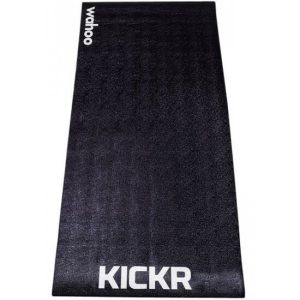Description
รายละเอียดสินค้า
Extended seattube cutout
Modular Storage

No wasted effort
A combination of material, shape, and lay up are used to engineer the desired stiffness of different parts of the frame. Increased stiffness at the bottom bracket and overall increased torsional stiffness mean better handling and faster acceleration.
- 18% Stiffer at BB
- 30% Improvement in overall torsional stiffness
Less Drag, More Speed
A complete redesign and system thinking makes the P-Series faster than the P3 in the wind tunnel and on the road.
- 26g faster than P3 bare
- 18g faster than P3 loaded
Real World Usability
The P-Series is designed with ease and customizability in mind. Flexible storage options and non-proprietary components allow you to dial in your unique setup for your fastest results.
- Interchangeable aftermarket cockpit options
- Storage includes Smartpak 400, AeroBottle 500, rear bottle mount
 STEERING STIFFNESS
STEERING STIFFNESS
Steering stiffness is the type of frame stiffness that most affects how a bike handles. It is commonly called torsional or head tube stiffness. Steering stiffness is defined as how much the bike frame twists when it is ridden around a corner. Generally speaking, higher steering stiffness leads to more responsive handling by reducing the lag time between input from the hands and reaction in the bike and rider.
Cornering can be described in engineering terms by a set of forces (the “load case”) applied at the handlebars, the saddle, and the tires’ contact points on the road. Some of these forces are in opposite directions, essentially twisting the frame. The load path from the handlebar flows into the frame through the headset bearings, and the load path from the saddle flows into the frame through the seat post.
In the lab, we mimic the application of these load paths by supporting or applying force at these points on the frame. We even mimic the forces at the contact points of the tires. We want to be sure that what we learn in the lab translates into performance that can be felt by the rider.
Cervélo’s testing of steering stiffness sets us apart from other bike manufacturers. The traditional industry test calls for the frame to be fixed to a jig at the rear dropouts and supported in the centre of the head tube. A torsional load is then applied to the head tube and the frame is essentially twisted. While this does put the frame under torsion, it is not a realistic load case. But by simulating the cornering loads from the tires as well as from the rider’s inertia, we have been able to reduce frame weight by removing carbon plies that had no effect on steering stiffness. The end result is reduced frame weight for the same effective steering stiffness.
The right amount of steering stiffness depends on the intended use. Too little stiffness, and the result is a “wet noodle” riding experience. You can also have too much steering stiffness: there is a point where the frame is so stiff (in steering) that the rider does not notice any benefit and may find that it makes the bike feel less comfortable, as more vibrations are transmitted to the hands.
PEDALING STIFFNESS
Pedaling stiffness is also known as bottom bracket stiffness. When a rider pushes down on a pedal the frame deflects laterally. Stiff frames deflect less, so more of your energy goes into turning the rear wheel, rather than deforming the frame.
How much pedaling stiffness is needed depends on many factors, including rider power output, how the bike is used, and frame (and rider) size. Track frames generally require more pedaling stiffness than endurance or triathlon bikes, but all benefit from higher pedaling stiffness.
However, pedaling stiffness can to be too high. As with steering stiffness, it is possible to increase pedaling stiffness to a level where the rider will not notice the difference. From that point on, any added stiffness only adds material, which means weight.
Testing: Common testing approaches for pedalling stiffness measure deflection under a force applied at either a horizontal or vertical plane. In our case, we apply force at a 15-degree lean angle to simulate real riding. The headtube is fixed to simulate out-of-saddle sprinting, and measurements are taken in the same direction as the pedal force vector to get an accurate measurement of pedaling efficiency. Again, the rear wheel is supported at the tire contact patch to more closely simulate real world conditions.
ข้อมูลเพิ่มเติม
| SIZE | 48, 51, 54, 56, 58 |
|---|




